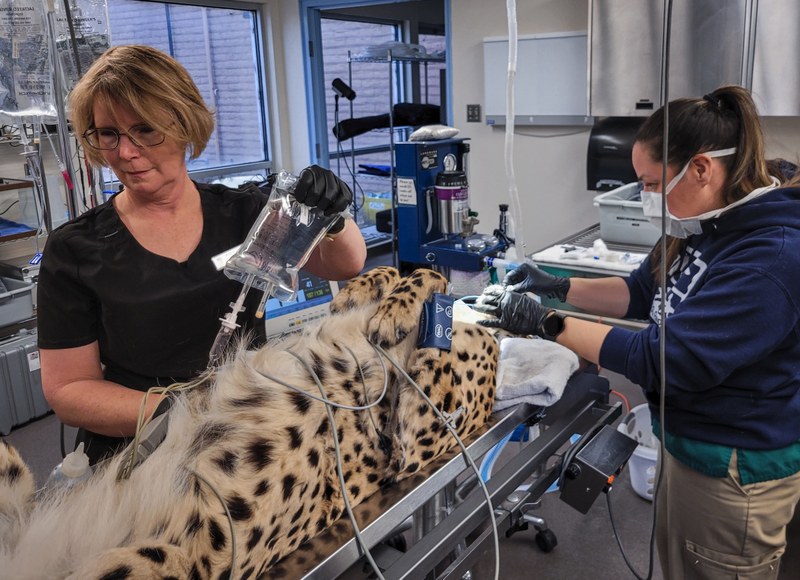
Celebrating BioPark Vet Techs—The Unsung Heroes of Animal Care
ABQ BioPark is grateful to our vet techs for their compassionate care and ingenuity.
From anesthetizing fish to performing x-rays on elephants, every day brings something new for ABQ BioPark vet techs.
“It’s fun, but also a challenge,” said ABQ BioPark senior veterinarian Dr. Carol Bradford. “The anatomy between birds, reptiles, and the variety of mammals is very different from what most other vet clinics see.”
With National Veterinary Technician Week being celebrated from October 12 to 18 this year, we want to recognize our amazing vet techs for all their hard work and dedication to the conservation and health of our resident animals.
“There is so much variety involved, so you’ve got to like a challenge and be able to think outside the box,” said Bradford. “You need to love animals, but also have that strength and emotional character to get through the tough days.”
There are currently three vet techs working at the BioPark who assist and support the veterinarians in procedures and exams. They also prepare medications, collect and analyze samples, prep the clinic for procedures, and much more.
BioPark vet tech Iris Goddard said what she enjoys most about her role is seeing how much care goes into the animals and all the teamwork involved.
“If an animal needs something, we can get it done,” said Goddard. “We have all these different people and specialists that come together, so that's really rewarding to just see a team of people looking out for what's best for the animal.”
For new BioPark vet tech Meredith Williams, being able to work with animals every day and learn about their unique needs is what inspired her to be a vet tech at zoos. Before the BioPark, she worked at different zoos across the country, but is happy to be back home in Albuquerque.
Gwen Dragoo, who has been working at the BioPark for 25 years, assists part-time as a vet tech but will soon be retiring.
“I really look back on it as being just a tremendous honor,” said Dragoo of her career at the BioPark. “I think the most rewarding parts have been all the conservation wins and being able to participate in some research projects that are happening all around the world. Also, being a part of making these animals’ lives as comfortable and happy as possible is the biggest reward.”
While the wins make it all worthwhile, being a vet tech is also challenging work, especially in an environment with so many exotic species.
“You have to be aware of so many different physiological and behavioral differences in the animals,” said Dragoo. “You don't really know what's coming, so adaptability, I think, is really key for being a good zoo veterinary technician. Every animal has their little quirk or evolutionary specialty that's just really fascinating to see up close.”
Creativity is also key, said Dragoo, since a lot of equipment they need is not commercially made, so it's common to have to ‘MacGyver’ a situation.
To top it all off, many vet techs at zoos also help train animals to participate in their own healthcare.
For example, collecting blood samples is important for monitoring the health of animals. For larger animals especially, this would be difficult to collect without training as the animal would likely have to be sedated which can introduce unnecessary risk or stress to the animal.
However, thanks to training from animal care staff and vet techs, collecting a blood sample from Kiska the polar bear or the hyenas is able to be done quickly and easily. The animals get a special treat out of it, too!
“Training with them is really fun,” said Goddard. “Seeing the polar bear and snow leopards voluntarily give you their paw is just amazing to see.”
“We are definitely never bored here,” said Bradford. “Our vet techs are completely invaluable to the running of the BioPark, and we just really appreciate them and their contribution to the big picture of endangered species conservation.”
